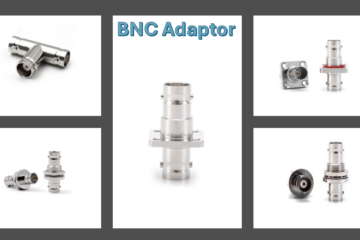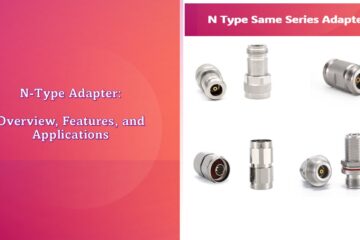In RF telecommunications, maintaining signal integrity is crucial for ensuring efficient and reliable communication. One challenge that often arises is the presence of high voltage direct current (HVDC) in the system, which can interfere with RF signals.And how they enhance signal quality and system performance.
Understanding High Voltage DC in RF Telecommunications:
a) HVDC Sources: High voltage DC can be introduced in RF telecommunications systems through various sources, including power supply leakage, ground potential differences, and stray capacitance in cables or circuit components.
b) Interference Effects: HVDC interference can cause signal distortion, degradation, and even complete signal loss in RF systems. This can lead to decreased data transfer rates, poor voice quality in telecommunication networks, and compromised system performance.
What is a High Voltage DC Block?
A high voltage DC block is a passive component specifically designed to reject or block the passage of HVDC while allowing RF signals to pass through. It acts as a capacitor, coupling RF signals while effectively decoupling any DC voltage. By separating RF and DC components, a DC block prevents interference and ensures the integrity of the RF communication.
Benefits of High Voltage DC Blocks in RF Telecommunications:
a) Signal Preservation: HVDC blocks prevent DC voltage from distorting or attenuating RF signals, preserving their quality and ensuring reliable communication.
b) Interference Reduction: These components eliminate interference by blocking HVDC, improving signal-to-noise ratio and minimizing signal degradation.
c) Increased System Efficiency: Removing HVDC interference enhances the efficiency of RF telecommunications systems, allowing for better data transfer rates, improved voice quality, and overall system performance.
d) Extended Equipment Lifespan: By protecting sensitive RF components from HVDC interference, high-voltage DC blocks can extend the lifespan of equipment, reducing maintenance costs and downtime.
Types of High Voltage DC Blocks:
a) Capacitor-Based Blocks: These blocks use capacitive coupling to allow RF signals to pass through while effectively blocking DC voltages. They are suitable for lower-frequency applications and offer excellent signal integrity.
b) Transformer-Based Blocks: Transformer-based DC blocks perform better at higher frequencies. They use the transformer’s impedance to couple RF signals while blocking DC voltages.
Installation Considerations and Maintenance:
a) Proper Placement: High voltage DC blocks should be strategically placed in the RF telecommunications system, typically near the input or output of RF modules or antennas.
b) Compatibility: When selecting a high-voltage DC block, ensure compatibility with your RF system’s frequency range and power levels.
c) Regular Inspection: Regular inspections and maintenance are essential to ensure the continued effectiveness of the DC blocks. This includes checking for corrosion or damage and verifying proper connections.
Conclusion:
Integrating high-voltage DC blocks into RF telecommunications systems is crucial for maintaining signal integrity and system performance. These components ensure reliable communication, improved data transfer rates, and extended equipment lifespan by effectively blocking HVDC interference. Investing in high-quality DC blocks is a proactive step towards optimizing RF telecommunications systems and providing enhanced connectivity for various applications.



0 Comments